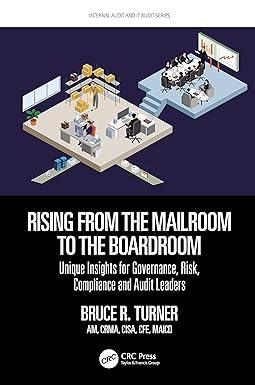Question
Question: Using the information above, how do you feel the COVID-19 pandemic impacted the collectability of Facebooks receivables? Support your answer using information from Facebooks
Question: Using the information above, how do you feel the COVID-19 pandemic impacted the collectability of Facebooks receivables? Support your answer using information from Facebooks financial data above
Information needed to answer above question:
The COVID-19 pandemic affected companies in various ways, including the collectibility of their receivables. Below is a summary of Facebooks accounts receivable balances on December 31, 2020 alongside December 31, 2019 for comparison.
|
| December 31, 2020 | December 31, 2019 |
| Accounts receivable | $11,449 million | $9,610 million |
| Allowance for doubtful accounts | ($114 million) | ($92 million) |
| Net accounts receivable | $11,335 million | $9,518 million |
Below are two excerpts from the footnotes of Facebooks December 31, 2020 10-K annual report. Read these paragraphs for further details on the impact of the COVID-19 pandemic on Facebooks accounts receivable.
Critical Accounting Policies and Estimates
In response to the economic slowdown caused by the COVID-19 pandemic, we believe that the assumptions and estimates associated with collectibility assessment of revenue and credit losses of accounts receivable could have a material impact to our consolidated financial statements in future periods, depending on the duration or degree of the impact of the COVID-19 pandemic on the global economy.
Accounts Receivable and Allowances
Accounts receivable are recorded and carried at the original invoiced amount less an allowance for any potential uncollectible amounts. We make estimates of expected credit and collectibility trends for the allowance for credit losses and allowance for unbilled receivables based upon our assessment of various factors, including historical experience, the age of the accounts receivable balances, credit quality of our customers, current economic conditions, reasonable and supportable forecasts of future economic conditions, and other factors that may affect our ability to collect from customers. Expected credit losses are recorded as general and administrative expenses on our consolidated statements of income. As of December 31, 2020 and 2019, our accounts receivable, net were $11.33 billion and $9.52 billion, respectively, and the allowances of accounts receivable were immaterial.
Step by Step Solution
There are 3 Steps involved in it
Step: 1

Get Instant Access to Expert-Tailored Solutions
See step-by-step solutions with expert insights and AI powered tools for academic success
Step: 2

Step: 3

Ace Your Homework with AI
Get the answers you need in no time with our AI-driven, step-by-step assistance
Get Started


